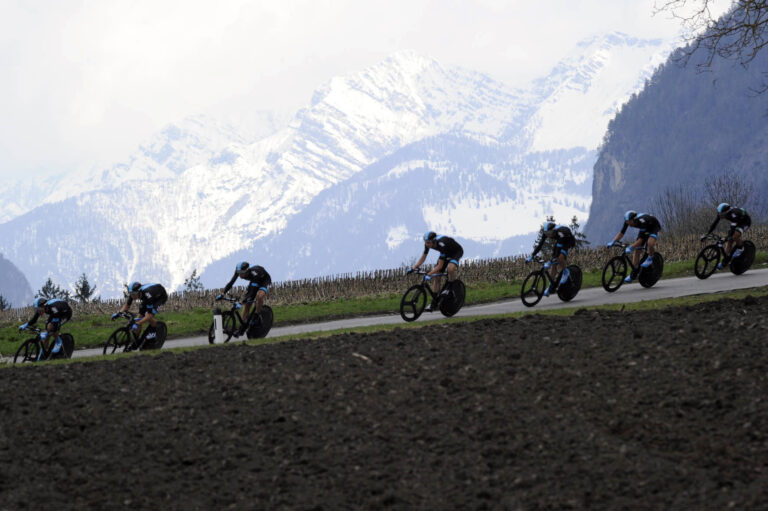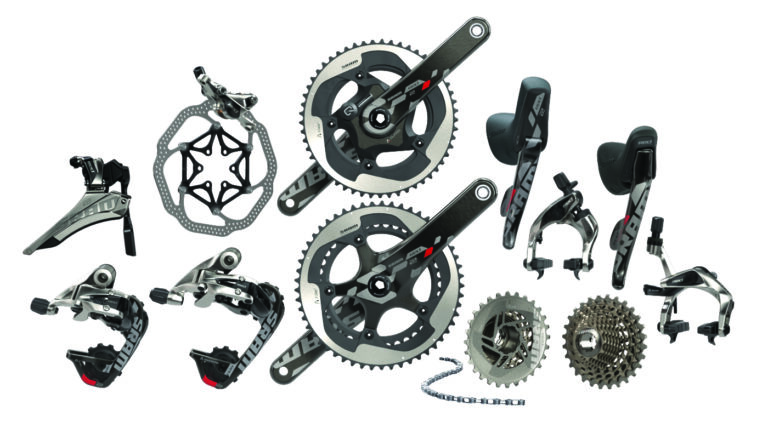When I think about descending, I can’t help but get a bit of a buzz.
Whatever your motivation for riding a bike there are surely not many of us who don’t like going fast, and pointing your bike downhill can be the easiest and most fun way to do that. What’s more, a glorious descent is the ultimate reward for a long and gruelling climb, the carrot on the stick that makes the uphill slog worthwhile.
Approaching any descent with respect is essential if you want to enjoy the ride without risking life and limb. The price you pay for a mistake downhill is often great and so unnecessary risks are definitely not worth taking. Knowing your ability and working on improving your skills safely is essential with descending.
Straight line speed: Control and aerodynamics
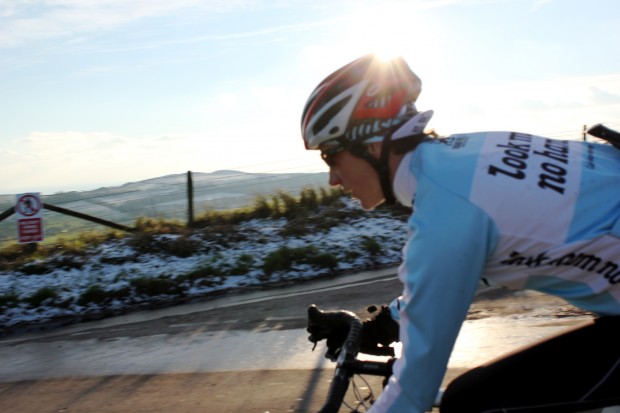
Straight line downhill speed while freewheeling should be a relaxed experience. A low and forward body position on the bike is important to keep you in control and able to respond if you need to, but also to maximise your aerodynamics and ‘free speed’ on the way down. It’s important to descend with your hands on the drops and your elbows bent so that your body weight is low over the front end giving you more control of the steering. Incidences of ‘speed wobble’ on descents are usually as a result of there not being enough weight at the front of the bike. Sometimes this is simply about your body position, but it can also be to do with your bike fit, as bikes set up with long head tubes and/or little/no ‘drop’ from saddle to bars will be much more difficult to handle at speed.
For most riders sitting relaxed in the saddle and dropping your upper body low will give you more than enough speed and control to enjoy the ride. Although you may have seen the pros adopting all kinds of fancy positions on descents, unless you already have a very high degree of skill it’s not worth the risk of trying to sit on the top tube or rest your chin on your bars.
Cornering at speed
Cornering at speed simply magnifies all the skills and elements that I discussed in the previous feature in this series. Essentially everything happens faster, so you need to allow more time and space to avoid costly mistakes. Knock off your speed earlier as you approach the corner to judge your line and manage your exit. The line that you need to take for a corner at speed will change quite a lot so giving yourself time to get a sense of this difference is important.
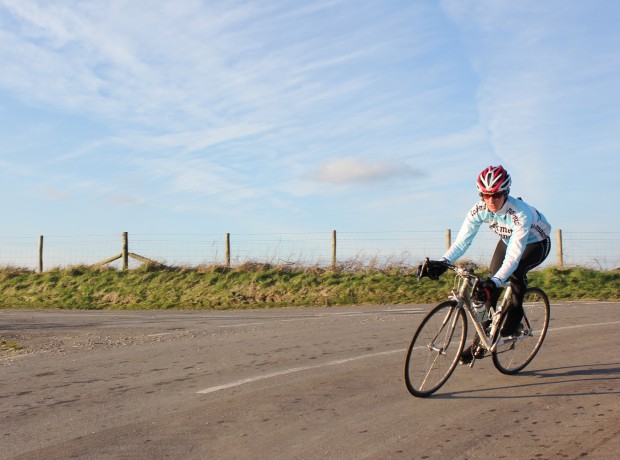
If there are other riders around you, give them plenty of room even more than seems necessary, including riders behind you. Even if you have a smooth, safe and fast approach and exit, you have no idea what a rider in front or behind is able to do and you will not be able to react so quickly (if at all) when cornering at high speeds. Avoid overtaking riders as you approach a bend, even if you have good skills yourself. It may unnerve others, making them more likely to over react or get into difficulty.
Hazards to take seriously
When cornering on descents, oncoming traffic should be taken very seriously as you will probably not see your loved ones again if you hit a car coming the other way. Where you can see cars approaching, allow more room and caution, and if you can’t see, presume that traffic will be there. Roughened edges are common on some of the more enjoyable descents you might encounter. Naturally some of the best climbs and descents take you into countryside where there are no kerbstones or barriers, so stay well within the edges as you corner in order to avoid a possible slide on gravel that could take you off a cliff edge in some circumstances.
No matter how much you love descending and how excited you get, safety must some first and probably the biggest danger is yourself. Do not overestimate what you will be able to do, and do not underestimate the impact fatigue may have on your judgment throughout a long descent or even at the end of a long ride.
Types of road/descent
Of course not all descents are the same, and you will need to refine your techniques to handle different types of terrain. The longer, well-known sweeping descents that you tend to get in Europe allow you to pick up speed and rhythm and can be especially enjoyable, although surprisingly fatiguing after 15-20 minutes going downhill. Some of the narrower descents in the U.K. and Europe can be a lot more challenging with sharper corners and changing surfaces to deal with as well as more significant changes in speed. To maintain your speed through these you will more likely need to judge and anticipate your gear changes and be prepared to put more effort into short burst of acceleration as you exit.
Wet conditions
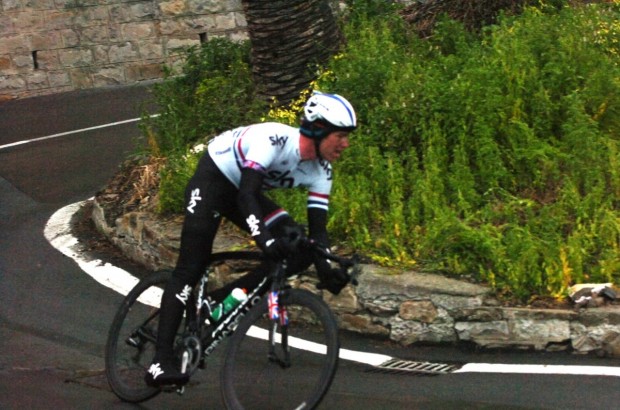
If you are unlucky enough to get a wet day for one of your big rides this season, take extra care on descents and corners. You will have to considerably reduce your speed and it may be worth carefully considering your tyre choice and air pressures to err on the side of safety if you have some serious descending as part of your day.
Familiar or unseen
How you approach a descent may depend on whether you have seen it before. It is worth looking at the profile and shape of down as well as uphill sections on a map or on line, or even searching out some video footage so that you are prepared for the gradient and corners you will encounter. After all, you may not have too many chances in a year to tackle the more exciting descents, and even if you fancy another go when you get to the bottom you would have to drag yourself all the way back up the climb again to get a second chance.
Practice small, but think big
Though you may not get a chance for some really great descending too often, chances are your regular riding gives you an opportunity to practice the basics on familiar roads. Simple things like disciplining yourself to descend on the drops and focus on control and body position should be well drilled on the small stuff before you hit the bigger challenges.

